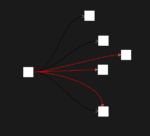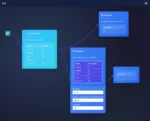
by tyler garrett | May 20, 2025 | Data Processing
In the dynamic landscape of data-driven businesses, speed and accuracy are paramount. Organizations increasingly rely on complex data transformation processes to distill their raw data into actionable insights. But how can teams deliver consistent, reliable data transformations quickly, without compromising quality? The answer lies in embracing Continuous Integration (CI) practices tailored specifically for data transformation logic. Leveraging CI principles for data pipelines doesn’t just ensure error-free deployments—it provides agility, enhances reliability, and enables teams to innovate faster. Through our extensive experience tackling challenging use-cases from event-driven architectures to semantic modeling, we’ve found that implementing a continuous integration strategy serves as a strategic advantage for our clients, transforming uncertainty into competitive insights.
The Importance of Continuous Integration in Data Transformation
Data transformations sit at the critical intersection between raw data and meaningful analytics. Missteps here—like outdated logic or uncaught errors—can cascade quickly into inaccurate or misleading reporting, harming trust across the entire organization. Continuous integration addresses these concerns proactively. With each change to your transformation code, CI processes automatically build, test, and validate transformations against predefined quality thresholds. This helps catch errors before they reach production, significantly reducing risk. For teams using advanced real-time aggregation techniques, proactive validation enables robust analytics workflows that users can trust.
A disciplined Continuous Integration framework also provides valuable audit trails. Transparency into transformation logic version histories assists analytics leaders looking to identify potential data quality issues and enables developer teams to revert changes confidently when needed. Moreover, CI encourages healthy practices like modularizing your transformation logic, managing dependencies clearly, and maintaining up-to-date documentation. Leveraging CI proactively fosters a culture of quality and responsibility, essential for data teams aiming for rapid innovation without sacrificing accuracy.
Building a Robust Continuous Integration Pipeline for Data Transformation Logic
A robust CI pipeline tailored specifically for data transformation logic requires careful planning and design. Typically, this includes clearly defined source-code repositories, automated code builds, rigorous unit and integration tests, and continuous quality assessments. Structuring your pipeline provides clarity and consistency. Version control systems like Git ensure visibility, easy collaboration between development and analytics teams, and trusted rollback capabilities. Automation tools such as GitHub Actions, GitLab CI/CD, Jenkins, or Azure DevOps help integrate validation tests directly into your workflow, smoothing out the path from development to deployment, and safeguarding against errors.
Unit tests play a vital role, testing your transformation logic against expected results to ensure functionality doesn’t degrade over time. Managing out-of-order event data effectively is a common challenge engineers face in analytics pipelines; robust integration tests paired with careful unit testing can ensure your data transformations handle these challenges gracefully. In addition to automated testing, advanced validation includes assessing the correctness and completeness of the generated output, checking functionality against historical data snapshots, and benchmarking performance against expected runtime metrics under realistic data volumes. Together, these elements build confidence, enabling quick iterations on valuable analytics logic and empowering decision-makers with reliable insights for strategic moves.
Addressing Complexities with Domain-Driven Data Design Methods
Large organizations often face significant complexity managing multiple domains and business contexts within their data pipelines. Implementing Continuous Integration in these environments demands disciplined strategies. One particularly beneficial approach that complements CI practices is Domain-Driven Data Design. Borrowing concepts popularized in software engineering, this method encourages defining clear boundaries (“bounded contexts”) around data transformation logic related to distinct business areas. Teams can independently develop, test, and integrate their respective transformation logic components without conflicts or unexpected dependencies arising.
Integrating Domain-Driven Data Design into your Continuous Integration workflows prevents misaligned data transformations and enhances transparency. Data architects and analytics leaders gain a clearer lens on their organization’s analytics lifecycles, leading to better governance practices. As organizations iterate and scale, aligning CI tooling with explicit business contexts ensures that each team can release and deploy confidently, reliably responding to evolving business demands without jeopardizing stability or accuracy across different business domains.
Semantic Layers and CI: Ensuring Consistency and Accuracy
Robust data analytics relies upon clarity and consistency—not simply in execution logic, but also in vocabulary and meaning. This necessity underscores the importance of developing and maintaining a semantic layer that empowers stakeholders to interpret data analytics uniformly. Continuous Integration can directly facilitate this strategy by embedding semantic validations and consistency checks within the automated CI pipeline. Incorporating metadata-driven validations ensures that data transformations comply with pre-agreed semantic standards, and spot anomalies early, avoiding misunderstandings and rework.
Failure to maintain semantic consistency can result in misleading analytics output, costly analytics re-engineering efforts, and lost stakeholder trust across executive leaders and analytics teams alike. By formalizing semantic measures and standards directly into continuous integration processes, organizations can avoid such pitfalls. Semantic layers provide particularly powerful transparency measures in executive dashboards, ensuring leaders trust their analytics insights and can confidently leverage executive dashboards that drive real strategic decisions.
Applying CI to Advanced Analytics Use Cases
As organizations expand their analytics capabilities, advanced features become increasingly standard in data transformation pipelines. Techniques like Natural Language Processing (NLP), sentiment analysis, real-time analytics, and predictive analytics introduce additional complexity. Implementing Continuous Integration addresses these advanced use cases robustly and proactively. Automated tests validate robust performance metrics, ensuring consistent reliability even across real-time streams or unstructured datasets. For example, in implementing complex pipelines for sentiment analysis with NLP, Continuous Integration helps verify accurate analytical outcomes at each iteration, ensuring machine-learning pipelines maintain accuracy and scalability over time.
Teams leveraging real-time analytics on event streams can confidently deploy changes to complex windowed aggregation logic, knowing proactive testing practices validate boundaries, timestamps, and traceability of events correctly. As transformation workflows incorporate emerging technologies like real-time windowing, NLP, and sentiment analysis, CI workflows become a prerequisite capability. The cumulative result is an efficient analytics environment, trusted by executives and essential for fostering innovation, often enabling teams to confidently experiment with innovative analytics concepts in vibrant tech communities like Austin, Texas.
Enhancing Legacy Data Transformation Systems with Continuous Integration
Many organizations continue relying heavily on older data transformation infrastructure, facing significant obstacles to replacing wholesale due to budget constraints or concerns over business continuity. This scenario often results in data teams struggling with maintaining outdated systems and slowing innovation. Continuous Integration provides valuable capabilities for enhancing these legacy systems strategically, giving teams incremental and impactful ways of improving quality and maintaining productivity without necessitating disruptive rewrites (see our insights on how to innovate inside legacy systems without replacing them).
Introducing continuous automated validations into existing legacy pipelines and transformation processes helps maximize stability and spot hidden issues early. Teams employing incremental CI processes can modernize parts of their logic a piece at a time, greatly reducing risk and maximizing flexibility. Leveraging smart design strategies to integrate Continuous Integration practices, organizations transform rigid pipelines into more agile, stable platforms that enable incremental updates, continuous innovation, and enhanced trust from analytics stakeholders.
Final Thoughts: Realizing the Value of CI for Data Transformation
Adopting Continuous Integration methodologies tailored specifically towards data transformation logic opens a beneficial pathway for organizations seeking innovation and analytical trust. Ensuring meticulous, automated validation at every step, CI strategically safeguards your analytics investments, enabling confident, rapid iteration. Paired with robust domain-driven design strategies, strong semantic layers, and insight-driven testing & validation, CI is no longer just for software—it’s an indispensable element of today’s effective data analytics ecosystem. As consultants deeply experienced in data analytics and MySQL and database consulting services, we consistently help our clients embrace CI practices, thereby delivering transformative, confident analytics that drive meaningful organizational outcomes.
Tags: Continuous Integration, Data Transformation, Data Pipelines, Domain-Driven Design, Real-Time Analytics, Data Analytics Strategy

by tyler garrett | May 20, 2025 | Data Processing
In the dynamic landscape of real-time data analytics, precision and timeliness reign supreme. Enterprises consuming vast streams of event-time data face unique challenges: delays, disordered events, and the inevitable reality of continuously arriving information. When managed poorly, these challenges translate into inaccurate analytics, delayed decision-making, and missed business opportunities. Enter watermark management—a strategic method to efficiently handle event-time data complexities, enabling organizations to harness insight in real-time despite inherent delays. As leaders in transformative data-driven strategies, we at Dev3lop have witnessed firsthand how mastering watermark management not only unlocks faster analytics but also positions forward-thinking businesses to outpace competitors and foster a true data-driven culture.
Understanding the Importance of Event-Time Data Processing
Event-time data references the actual time an event occurs, unlike processing-time, which records when an event reaches the system. This distinction can appear minor but has significant implications. In today’s interconnected world, data rarely arrives neatly ordered or immediately after the event’s occurrence. Network latency issues, geographic separation, device failures, or intermediate buffering strategies can all result in data streams that are fragmented, delayed, and out-of-order. Effective event-time processing aligns analytics directly with when the event physically happened, offering a vastly more accurate, nuanced understanding of these continued data flows.
Neglecting proper event-time handling can result in skewed analytics, inaccurate forecasts, or misinformation reaching critical business decisions. Ensuring robust watermark management protects organizations from these pitfalls by accurately determining when data streams are complete enough for analysis. At Dev3lop, we’ve guided numerous businesses through integrating watermark mechanisms within their complex data pipelines. From financial services firms striving for near-instantaneous accuracy to e-commerce ventures seeking real-time user analytics, fine-tuning event-time precision becomes essential. By masterfully incorporating robust data-handling techniques—like innovating inside legacy systems without replacing them—watermark management empowers organizations to maximize the potential inherent in their event-time data flow.
Demystifying Watermark Management: Conceptual Foundations
To successfully leverage watermark management in event-time data processing, it’s crucial first to demystify what a watermark represents. In the simplest terms, a watermark is a timestamp indicating that the system should consider all data prior to that point as fully arrived and ready for processing. Any data appearing behind this watermark is typically late or out of order and handled separately according to business-defined criteria. Efficient watermark placement balances accuracy, latency, and resource utilization—crucial factors for businesses making informed, real-time decisions.
A watermark typically lags slightly behind real event-time due to expected delays or discrepancies in incoming data. A carefully established watermark buffer period ensures balanced results; too-large buffers can increase processing latency, while too-small intervals risk excluding significant outliers or delayed events crucial to accurate analytics. Understanding such nuances helps organizations standardize watermark responsibilities across data workflows, minimizing ambiguity, and reducing latency to foster reliable analytic insights. At Dev3lop, we engage closely with clients through targeted PostgreSQL consulting services and comprehensive organizational training. This helps teams navigate watermark management intricacies and develop optimized real-time data architectures suited to their specific business cases.
Integrating Watermark Management into Your Data Pipeline
Integrating watermark management isn’t simply theoretical—it’s a strategic progression of your data architecture from batch-driven or processing-time analytics toward real-time, event-driven insights. A successful integration involves optimizing your pipeline’s logic, leveraging your selected multiprocessing frameworks, and faithfully representing your specific business requirements. Here’s how your team can smoothly incorporate watermark practices within your existing infrastructure:
Establish Clear Event-Time Criteria
Explicitly defining your event-time metrics provides a strong foundation for all future watermark-related processes. Define a clear timestamp selector that aligns closely with your organization’s analytics goals. Are you examining user-click patterns, IoT sensor data, or financial transactions? Choose an event-time indicator unambiguously reflective of the events you’re analyzing, and align your watermark strategy accordingly.
Implement Late-Event Handling Strategies
Late-arriving data is an unavoidable facet of real-time systems. Your watermark-focused analytics engine needs predefined logic to handle such exceptions. Whether discarding late events, pushing them into side storage, or reprocessing to maintain accuracy, your organization must design strategic responses based on business priorities and analytic outcomes. Our clients often leverage lessons from our detailed guide on granting privileges and permissions in SQL to establish robust mechanisms, ensuring secure, scalable, and repeatable data handling.
Optimize Watermark Lagging Thresholds
Judicious tuning of watermark lagging parameters significantly impacts both analytical accuracy and productivity. Organizations must regularly assess and update buffering thresholds based on evolving hardware infrastructures, changing business logic needs, and technological advances. Our team brings deep experience in tuning parameters for optimal effectiveness—tailoring pipeline adjustments toward precise business KPIs, latency targets, and real-world operational constraints.
Evaluating Tools and Technologies for Effective Watermark Management
A strategic watermark implementation is amplified by optimal technology choice. Several comprehensive streaming frameworks offer watermark management capabilities specifically designed for event-time analytics, including Apache Flink, Apache Kafka Streams, Google Dataflow, AWS Kinesis Data Analytics, and others. Your organization’s decision hinges upon specific requirements, skillsets, scalability objectives, available infrastructure, and analytic outcomes desired.
Tools like Apache Flink provide explicit watermarking mechanisms with customizable parameters, offering granular control over lateness handling strategies. Kafka Streams integrates seamlessly within existing real-time Kafka environments and conveniently manages event-time, enabling users to capitalize on existing investments faster. Additionally, public cloud solutions like Google Dataflow simplify administrative overhead for boundary-pushing enterprises eager to embrace modern, serverless watermark architectures.
If you’re exploring how best to select the right technology stack, our experienced industry veterans suggest examining your organization’s broader ETL landscape alongside watermark management capabilities. Consider our comprehensive insights on choosing the right ETL tool for your business and integrating it rigorously with your watermark strategy. When decisions involve embedding-driven applications, explore our definitive framework for vector database selection criteria, empowering informed decisions with cutting-edge insights.
Benefits of Effective Watermark Management in Real-Time Analytics
Effectively mastered watermark management delivers measurable strategic benefits, significantly extending beyond streamlined operational capability into decisive business advantage. Real-time analytics precision derived from watermarks generates compelling organizational impacts:
Enhanced Data Accuracy for Better Decisions
Watermark-enabled analytic correctness provides decision-makers with a reliable, trusted data point from which to make strategic choices. Teams can confidently base resource allocation, marketing spend, and customer engagement strategies upon reliable, precise data analysis—quickly transforming real-time insights into immediate competitive edge.
Increased Operational Agility and Efficiency
Successful watermark implementations streamline real-time analytics, minimizing workflows characterized by latency issues or misguided decisions. Organizations dramatically shorten analytic cycle times, enabling rapid responses to evolving market conditions or customer dynamics dynamically.
Simplified Troubleshooting and Scalability
Proper watermark governance dramatically simplifies identifying, isolating, and resolving issues throughout your event-driven pipeline. The standardized invocation of watermarks and well-thought-out lateness handling strategies drastically improves stability, scalability, and proactive performance enhancement when scaling analytics infrastructures.
Partnering with experts specializing in robust data environments—like Dev3lop’s seasoned team featured in our article “What’s It Like Hiring Engineers Focused on Improving Your Data Environment?“—can further enhance outcomes through dedicated guidance. Consultants and engineers formulate strategic action plans customized precisely to your watermark management ambitions, empowering your team with mature, outcome-driven methodologies refined for countless enterprise operations.
Conclusion: Unlock Real-Time Potential through Masterful Watermark Management
Event-time data processing is paramount for organizations aiming to fully capture the nuances of real-world events, customer activities, and market dynamics without delays. Strategic watermark implementation effectively ensures data’s readiness for meaningful analytic translation, allowing invaluable business agility and fast-tracked decision clarity. By understanding, integrating, and continuously optimizing watermark practices within your organization’s analytics environment, leaders harness true real-time potential.
At Dev3lop, our commitment to driving innovation within analytics empowers clients to confidently embrace watermark management. Secure your competitive advantage, enhance your decision-making precision, and make your innovative mark upon progressing data horizons today.

by tyler garrett | May 19, 2025 | Data Processing
In a world driven by ever-growing digital interactions and increasingly sophisticated user expectations, ensuring that information retrieval aligns precisely with user intent has never been more critical. Semantic search, powered by vector embedding pipelines, addresses this exact challenge by bridging the gap between queries and meaningful responses. Businesses today are looking beyond keyword-based approaches to leverage advanced data science and machine learning solutions—seamlessly catering to consumer demands for accurate, context-sensitive, and actionable insights. As experienced advocates of innovative data solutions and analytics strategies, we at Dev3lop Consulting believe that understanding the principles and practicalities behind a robust vector embedding pipeline is crucial. Let’s explore how constructing an optimized semantic search pipeline can revolutionize your approach to data interpretation, enhance customer experiences, and ultimately position your organization at the forefront of digital innovation.
Understanding Vector Embeddings and their Importance
At its core, vector embedding is a method of converting text, queries, or data points into numerical representations—often high-dimensional vectors. Each vector represents semantic meaning, capturing the deeper context and relationships between words or concepts. These embeddings streamline how search engines interpret user queries, significantly improving accuracy and the relevance of responses. From powering recommendation engines to improving internal knowledge bases, vector embeddings are fundamental across today’s most cutting-edge digital platforms.
A critical advantage of using vector embeddings is their ability to translate human-level understanding into computational logic. Unlike older keyword-matching systems, embedding-derived searches recognize semantic relationships like synonyms, intent, and context, delivering results that resonate directly with what users need. For instance, in our recent project focusing on predicting client churn utilizing open-source machine learning tools, we implemented embeddings—drastically refining predictive analytics outcomes through better contextual understanding. Read more about it here: Predicting Client Churn with Open Source Tools.
To highlight the versatility of embedding techniques, businesses in diverse sectors, from music industry analytics to enterprise resource management, have transformed their search and recommendation capabilities leveraging vector embedding solutions. Understanding the foundational concepts behind embeddings helps stakeholders evaluate factors like scalability, implementation, and system design to accommodate expected growth and performance demands.
Designing the Ideal Semantic Search Pipeline with Vector Embeddings
Semantic search pipelines powered by vector embeddings typically follow a solid structural framework: transformation, storage, indexing, retrieval, and refinement. Designing these steps thoughtfully ensures maximum clarity, efficiency, and alignment with organizational goals.
1. Data Preprocessing and Transformation
The pipeline begins with collecting and preparing your data. Effective preprocessing involves crucial tasks such as text normalization, tokenization, lemmatization, and eliminating redundant or noisy data points to ensure embeddings accurately represent meaningful contexts. Data preprocessing directly supports semantic accuracy; therefore, it’s foundational in ensuring optimal pipeline functionality.
A robust preprocessing stage significantly improves downstream analysis clarity, scalability, and accuracy. For example, in our Austin music analytics use case, preprocessing allowed our analytics engine to rapidly segment and interpret listener engagement data, effectively enhancing musicians’ ability to connect with their audiences. Learn more about this exciting application in our article: How Austin’s Music Scene is Leveraging Data Analytics.
2. Embedding Generation and Model Selection
Choosing the right embedding models based on specific business contexts is key for pipeline accuracy and efficiency. Popular pre-trained models, such as BERT or GPT embeddings, are advantageous for natural language understanding tasks but may also require customization to best serve specific use cases. Proper model selection is essential to capture subtle semantic nuances and ensure high-quality search experiences.
Further refining model choices by employing A/B testing and real-time analytics dashboards can rapidly accelerate the embedding selection process. Take a look at one of our Streamlit and Kafka solutions used by leading organizations for real-time monitoring and decision-making: Building a Real-time Dashboard.
3. Efficient Vector Storage and Indexing Strategies
Once embeddings are generated, effective vector storage solutions become paramount, as embedding vectors—particularly from large datasets—can require sophisticated indexing technologies. Vector databases like Pinecone, Weaviate, and PostgreSQL (with advanced embedding indexing capabilities) offer efficient storage options suited for diversified semantic search applications.
Our team emphasizes the strategic selection of databases, particularly PostgreSQL given its proven flexibility, scalability, and powerful indexing capabilities when tailored for semantic search performance. For dedicated insights into managing large datasets effectively, our PostgreSQL Consulting Services can help design solutions that optimize your semantic search infrastructure.
4. Semantic Search Execution and Refinement
Search and retrieval involve algorithms calculating vector similarity, typically utilizing similarity metrics such as Cosine similarity or Euclidean distance. These processes effectively discern semantic relationships and accurately match user queries with highly relevant content.
Further refinement includes range filtering using advanced SQL techniques, assisting organizations in dynamically narrowing search results. Master this important concept through our insightful guide, Mastering Range Filtering with the SQL BETWEEN Operator. By systematically refining and optimizing retrieval, you ensure users receive accurate insights tailored precisely to their query context, significantly improving user benefits and satisfaction.
Enhancing Usability through Visualization and Analytics
Once established, semantic search effectiveness can and should be continuously evaluated through analytical dashboards and data visualization. Introducing interactive visualizations helps to identify and solve semantic mismatches, unexpected data skews, or improvements in embedding efficiency quickly.
Applying intelligent visualizations to semantic search insights enables your team to spot data anomalies, refine your embedding models, and enhance usability. Consider leveraging our existing resources on crafting compelling data narratives to maximize business intelligence potential; check out this valuable read on our blog: The Art of Storytelling through Data Visualization.
It’s crucial for data visualizations to accurately represent dataset specifics—avoiding scale distortion or misrepresentation, a concept thoroughly explained in our informative guide, Use Appropriate Scales and Axes.
Embracing Continuous Improvement and Scalability
Vector embedding pipelines for semantic search should evolve alongside new data, methods, and technologies. Continuous improvement mechanisms, agile development cycles, and scalable infrastructure strategies are essential to maintaining robust semantic search capabilities as organizations grow.
An optimal approach involves considering innovative scheduling and automation solutions such as Canopys Task Scheduler launched by our team recently. Discover how you can streamline tasks within your semantic embedding pipeline efficiently using our latest software innovation: Canopys Task Scheduler.
Furthermore, iterative modifications of database structures, including employing ALTER TABLE commands to dynamically update or enhance data structures, are valuable skills for handling scalable embedding solutions effectively. Our insightful technical exploration of data management techniques explains this method clearly here: ALTER TABLE: Modifying an Existing Table in SQL.
Choosing the Right Tools for Embedding Pipeline Development
When implementing embedding solutions, development environments ultimately matter. While choosing between Windows or Mac might matter less on simpler projects, embedding-heavy semantic searches often benefit from optimized, stable development frameworks. Understand more deeply why Mac often pairs exceptionally well with JavaScript-based tools in our technical guide here: Why Mac vs Windows is JavaScript’s BFF When Using VS Code.
Your choice of tools and platforms significantly influences pipeline development efficiency, ease of integration, and overall user satisfaction. Let technical expertise guide your strategic technology selections—benefiting everyone involved.

by tyler garrett | May 19, 2025 | Data Processing
Handling real-time and large-scale data changes effectively is now fundamental for businesses aiming to remain agile and responsive in today’s dynamic market landscape. The explosion of data sources, rapid shifts in consumer behaviors, and growing regulatory compliance needs all necessitate powerful and adaptable approaches to change data capture (CDC). Incremental processing of change data capture offers organizations the strategic advantage of processing only the data that has changed or newly emerged, significantly reducing overhead and improving organizational responsiveness. In our experience at Dev3lop, leveraging incremental CDC strategies doesn’t just streamline data pipelines—it transforms them into proactive, insights-driven engines capable of accelerating informed decision-making. Let’s delve deeper into incremental processing methodologies and uncover how organizations can strategically cultivate scalable and efficient CDC operations for their data-driven journey.
The Strategic Advantage of Incremental CDC Processing
Incremental Change Data Capture is essential because it emphasizes processing only the data differences since the last cycle or ingest, thereby reducing redundant operations and streamlining resource consumption. Traditional CDC methods often fail to scale effectively, as organizations confront data flows that grow exponentially, causing latency and negatively impacting operational databases. Incremental CDC solves these pain points by capturing only the modifications that matter—new inserts, updates, or deletes—since the previous ingestion period. This focused approach enhances system performance, cuts storage costs, and elevates overall pipeline efficiency.
Implementing incremental processing gives businesses increased analytical agility by empowering near-real-time insights. For instance, a retail organization monitoring customer behaviors with incremental updates can swiftly adapt their marketing strategy based on rapidly changing consumer preferences. This proactive capability elevates decision-making from reactive guesses to data-driven strategies grounded in operational excellence.
Transitioning to incremental CDC also aligns well with common strategic initiatives, such as budget-friendly modern approaches. If your organization is considering efficient data management methods under budget constraints, we recommend looking into our detailed guide on setting up a modern data stack on a budget, where incremental CDC values can be strategically applied to maximize data effectiveness without inflating expenditures.
Understanding Incremental CDC Approaches
When adopting incremental CDC strategies, several methodologies should be considered, tailored explicitly to organizational needs and technical constraints. Two common incremental CDC approaches include Timestamp-based and Log-based methods.
Timestamp-based CDC leverages datetime stamps within source databases, comparing timestamps of records to identify and extract only recent changes since the previous ingestion. It’s straightforward and easily implemented but equally susceptible to certain drawbacks—such as accuracy risks due to transaction delays or concurrent updates modifying timestamps inaccurately. Understanding potential pitfalls is critical; we regularly advise reviewing our insights on improving the performance of your ETL processes that address such nuances directly.
Log-based CDC, alternatively, closely examines database transaction logs or redo logs to precisely capture data modifications directly from transactional operations. Usually, this approach guarantees more accuracy and completeness in incremental data collection processes, as it captures data changes at its most granular level. For robust and comprehensive CDC, log-based processing remains superior, albeit requiring slightly more sophisticated tooling and expertise.
Choosing between these incremental methods critically impacts real-time analytics capabilities and operational efficiency—both cornerstones of advanced analytics consulting. Our clients gain measurable performance boosts and enhanced decision-making agility with tailored incremental CDC strategies, as reinforced through our detailed advanced analytics consulting services.
Overcoming Challenges in Incremental Processing
While incremental CDC offers powerful strategic advantages, organizations must navigate specific technical challenges to harvest its full benefits. A fundamental challenge involves maintaining offset management and checkpoints, ensuring that each ingestion cycle captures precisely the correct increment of change. Failure to manage offsets can lead to duplicate entries or data loss, adversely affecting data quality and analytics integrity.
Data consistency and transactional integrity represent additional technical hurdles. During incremental processing cycles, transactionally consistent datasets must be ensured to prevent misrepresentations in downstream analytics products. Tackling these complicated synchronization needs leads companies to explore advanced alignment methods. For deeper insights into ensuring solid synchronization across systems, consider reviewing our practices on bidirectional data synchronization patterns between systems. This guidance helps organizations effectively address synchronization challenges inherent in incremental CDC operations.
Realizing Advanced Analytics Potential through Incremental CDC
Incremental CDC isn’t simply about efficient data movement; it’s transformative for realizing strategic analytics initiatives that depend on timely and accurate data. Advanced analytics initiatives, such as predictive modeling, machine learning, or anomaly detection, require continuously fresh data to remain effective. Think of incremental CDC as fuel—efficiency and consistency in data delivery translate immediately into responsive analytics capabilities.
For instance, in network-related data contexts, CDC’s incremental processing unlocks quicker adaptation to changes, providing opportunities to use impactful visualization paradigms. As organizations mature in their incremental CDC methodologies, integrating forward-thinking visualizations, like those discussed in our innovative Non-Euclidean visualization techniques for network data, demonstrates how timely CDC data can dramatically enhance organizational understanding and decision-making by visualizing relationships otherwise hidden by conventional methods.
Our advisory and analytics practices at Dev3lop demonstrate repeatedly that well-executed incremental CDC processes dramatically empower companies in their analytics journeys. Incorporating methodologies that drive analytics maturity through swift incremental CDC supports delivering insights in clearer, actionable, and impactful ways.
Building Cohesion and Avoiding Pitfalls: Communication is Key
Successful implementation and management of incremental CDC solutions demand effective communication and collaboration across technical and business teams. Miscommunication about incremental CDC expectations can lead to gaps in data quality, misunderstandings about system performance, or delivery speed mismatches that ultimately jeopardize trust in data pipelines.
We strongly advocate the establishment of dedicated analytics working sessions to bridge these gaps proactively. Working sessions not only strengthen incremental CDC execution but also foster broader organizational knowledge about data and analytics as strategic assets. Clarifying pipeline requirements, identifying misalignments early, and encouraging real-time dialogue between stakeholders significantly reduces risks attributed to miscommunication. To learn more about successfully formalizing these beneficial inter-team interactions, review our detailed recommendations on using working sessions to reduce miscommunication in analytics projects.
At Dev3lop, we’ve witnessed firsthand how clarity around incremental CDC operations promotes better governance frameworks, quicker adoption of innovative methodologies, and superior analytics-driven outcomes. Communication, alignment, and cohesion aren’t ancillary to incremental CDC—they’re foundational.
Conclusion: Incremental CDC – An Enabler for Operational Excellence
Incremental processing for Change Data Capture represents a critical opportunity for organizations intent on increasing analytics agility, enhancing pipeline efficiency, and ultimately driving innovation and informed decision-making across their enterprise. By adopting an incremental CDC approach tailored specifically to their operational and analytical needs, organizations can pivot proactively, capitalize on emerging trends, and address challenges effectively.
Dev3lop’s extensive experience and strategic advisory align closely with organizations seeking to deploy incremental CDC as part of their comprehensive data strategy. We anticipate incremental CDC gaining increased prominence as organizations strive for operational excellence, analytical agility, and deepened competitive advantage driven by truly actionable data insights.

by tyler garrett | May 19, 2025 | Data Processing
In today’s data-driven business landscape, managing and understanding the flow of data across diverse organizational systems has become crucial to unlock innovation and accelerate decision-making. A critical yet often overlooked component in data governance strategies is the pipeline registry implementation. By organizing foundational pipeline metadata, a pipeline registry not only streamlines your data operations but also enhances business capabilities, agility, and trust. In this article, we’ll guide business and technical decision-makers through the essential elements of pipeline registry implementation, highlight the tangible benefits it brings, and underscore why managing data flow metadata strategically is no longer optional for forward-thinking organizations.
Why Pipeline Registries are Fundamental to Data Management
Understanding the flow and lineage of data has traditionally been a complex, manual task. Data pipeline registries eliminate this complexity by providing a structured, accessible catalog of pipeline metadata. They significantly reduce operational risks, such as data duplication, inconsistencies, and misaligned information, empowering stakeholders to confidently harness data analytics. Having centralized access to metadata ensures teams don’t waste valuable resources re-doing tasks or chasing down fragmented information sources.
A well-executed pipeline registry will include comprehensive pipeline details, including data sources, transformation logic, and destinations—effectively mapping how information moves through your organizational ecosystem. For instance, properly structured metadata can support detailed auditing processes, facilitate compliance efforts, and simplify troubleshooting. Businesses actively using advanced analytics like our strategic Power BI consulting services can benefit significantly by seamlessly integrating pipeline registries into their data analytics workflows, ensuring clarity and accuracy throughout business-critical insights.
In essence, effective metadata management provides transparency that significantly boosts organizational efficiency. Leaders can anticipate and mitigate risks proactively, confidently pursue innovation, and drive focused decision-making built upon reliable and accessible information about data pipelines.
Core Components of a Robust Pipeline Registry
An effectively designed pipeline registry needs several crucial features that together offer comprehensive visibility into data operations. First, pipeline definitions and data lineage diagrams are foundational for transparency and provide visualization of end-to-end data journeys. Accurate and consistent lineage tracking helps analysts and leaders understand exactly where data originates, which operations impact it, and how it ultimately reaches consumers. Employing a structured approach helps maintain clarity even when implementing complex transformations or extensive ETL processes. For those seeking guidance on best practices for pipeline transformations, explore our detailed insights into ETL in data analytics.
Secondly, documentation and metadata schema standards form the backbone of any robust data registry. Having standardized data dictionaries and pipeline metadata documentation allows both technical and non-technical professionals to quickly grasp vital information, minimizing ambiguity and ensuring seamless alignment across teams. Incorporating principles such as those outlined in our overview of bounded contexts in data platforms further bolsters the accuracy and efficacy of metadata schemas, enabling clearer communication across different organizational domains.
Lastly, built-in auditing, security, and access control mechanisms protect sensitive data pipeline information and ensure compliance with data governance standards and regulations. Regulatory demands often require precise data tracking, making secure and traceable pipeline repositories essential for compliance audits and business continuity.
Pipeline Registries and Advanced Analytics Integration
Aligning pipeline registry capabilities with advanced analytics initiatives significantly increases the value derived from data assets. Advanced analytics, encompassing predictive modeling, machine learning, and big data processing, depends heavily on consistent, high-quality pipeline metadata. These modern analytical methods gain accuracy and consistency from clear, verifiable information recorded explicitly within pipeline registries.
Whether it’s applying predictive analytics for better forecasting—highlighted in our piece on mastering demand forecasting with predictive analytics—or leveraging technology for advanced supply chain solutions described further in our insights on enhanced supply chain management, the impact from a clearly organized pipeline registry creates beneficial ripple effects throughout your organization’s entire analytical ecosystem.
These sophisticated analytics workflows require an understanding of data precision, transformations, and propagation routes, allowing machine learning and forecasting models to function optimally. By leveraging pipeline registries, analytics teams can quickly gain context, troubleshoot inconsistencies or anomalies, and drive meaningful predictive insights without ambiguity or guesswork. Such informed integration fosters innovation and sharpens analytics-driven strategic initiatives.
The Business Risks of Ignoring Data Pipeline Metadata
Neglecting structured metadata management within pipeline registry implementation introduces substantial risks to businesses, especially in highly regulated and precise contexts like the finance industry. For example, as our in-depth analysis illustrates in the finance industry’s reliance on data, insufficient metadata organization can magnify data quality, regulatory compliance, and operational risks. Repeated inaccuracies, misreporting, or delayed decisions may arise from inconsistent data flows, ultimately impacting credibility and financial performance significantly.
Moreover, businesses without a robust pipeline registry face challenges in defining clear project and feature scoping. Limited insight into available metadata contributes to an inability to prioritize effectively and may lead to feature bloat or misguided resource allocations. To fully grasp the strategic implications, business leaders should consider our strategic guide on deciding when to say no to a software feature. Clear visibility and organization through metadata enable efficient prioritization, healthy resource allocation, and stronger, more strategic planning and execution.
Ultimately, ignoring metadata means ignoring the foundations of data governance. Leaders cannot maintain effective data compliance, data quality, or confident innovation without a structured pipeline metadata management framework. Implementing robust pipeline registries ensures fewer mistakes, higher consistency, lower operational risks, and proactive strategic insights supporting scalable growth.
Choosing the Right Tools for Pipeline Registry Implementation
When organizations commit to pipeline registry implementation and structured metadata management, the question becomes about selecting and integrating the most suitable tools. Generally, companies can choose between open-source solutions and commercial ETL implementations, each with unique advantages and considerations. An informed comparison can guide decision-making, such as our analysis on open-source versus commercial ETL solutions.
Evaluating tools should be guided by several factors: ease-of-use, scalability, customization potential, support ecosystem, and cost-effectiveness. Open-source pipeline frameworks are appealing due to their flexibility and often lower upfront costs. However, commercial solutions typically provide robust security features, immediate support teams, and advanced compliance options that may alleviate internal administrative efforts and longer-term paid resource commitments.
Ultimately, successful pipeline registry tool selection comes down to business objectives, operational complexity, internal talent allocation, and long-term growth ambitions. Organizations should carefully evaluate technical requirements and business contexts, always ensuring their pipeline registries align seamlessly with their broader strategic operational objectives.
Implementation Best Practices: Setting Your Pipeline Registry Up for Success
Effective implementation begins with clearly defined business objectives and stakeholder alignment. Emphasize cross-team collaboration among engineers, business analysts, data scientists, and compliance experts from the outset to ensure effective adoption and alignment around documented metadata standards. Establish strong governance processes, emphasizing accountability for documentation and registry maintenance upon deployment.
Second, leverage automated metadata harvesting tools, intelligent documentation, and integrated workflows wherever feasible. These technological advancements reduce manual documentation overhead and human error potential, while significantly improving pipeline registry accuracy. Align implementation timelines and milestones realistically, demonstrating incremental achievements and building confidence across your organization.
Lastly, emphasize training and continual communication within your teams. Awareness and education on pipeline registry benefits encourage systematic adoption throughout daily tasks, fostering organizational maturity in metadata management practices and data literacy. As you emphasize clarity, standardization, and data accessibility internally, also embrace external insights, such as our strategic guide on creating accessible data visualizations for all users, to enhance your data implementations further.
By following these structured methods and systematic implementation, you’ll lay solid foundations for reliable data governance, analytics adaptability, and business innovation.
Tags: Pipeline Registry, Data Analytics, ETL, Data Governance, Metadata Management, Predictive Analytics

by tyler garrett | May 19, 2025 | Data Processing
Imagine your business runs on streaming data, an endless torrent flowing from customers, IoT sensors, or user interactions across your digital platforms. Each event is vital, holding tremendous insight into behavior, opportunities, and performance if processed accurately. Yet, if even one critical event is duplicated or dropped, business decisions risk being flawed, ultimately threatening customer trust and profitability. Enter exactly-once processing, the holy grail of modern stream analytics. Implementing exactly-once semantics ensures every event is captured and utilized precisely—no duplicates, no losses. Within this powerful capability lies enhanced data quality, superior business insights, and streamlined decision-making. For teams seeking optimal profitability and competitive advantage—exactly-once processing emerges as an indispensable strategy.
Understanding Exactly-Once Semantics
In streaming data systems, processing each event precisely one time—no more, no less—can be complex. Exactly-once semantics guarantee that every message in our data pipelines is handled only once, preventing both data duplication and message omission. Unlike at-least-once or at-most-once processing approaches, exactly-once processing provides strict assurances of event accuracy, making it invaluable for financial transactions, inventory management, and decision-support systems. This fundamental accuracy significantly improves overall data quality, helping businesses avoid pitfalls discussed in our article on data quality as an overlooked factor in profitability.
To achieve exactly-once guarantees, sometimes referred to as neither-lossy-nor-duplicative processing, streaming frameworks must handle nuances around message acknowledgment, checkpointing, idempotency, and fault tolerance with precision and reliability. As real-time analytics has exploded in popularity—due to its transformative potential illustrated in our client success story, “From Gut Feelings to Predictive Models“—interest in exactly-once processing has surged, especially among companies dependent upon accurate and actionable real-time insights.
Exactly-once semantics, although conceptually straightforward, are challenging to implement in distributed systems with unpredictable network issues and hardware faults. This complexity underscores why organizations frequently partner with experts offering comprehensive solutions, like our specialized data warehousing consulting services, to truly harness the power of exactly-once processing.
Why Exactly-Once Processing Matters for Decision Makers
Reliable data is foundational to successful business decisions. When strategic and operational choices are increasingly data-driven, the significance of precisely accurate data cannot be overstated. Exactly-once guarantees ensure your analytics dashboards, predictive models, and business intelligence platforms reflect trustworthy and timely information. Conversely, without precisely accurate event processing, analysis outcomes become distorted: duplicated transactions inflate sales figures, inaccurately represented clicks mislead marketers, and inventory positions rapidly lose alignment from reality. This misalignment costs businesses money, time, and confidence, creating a significant profitability gap.
Decision-makers striving to enhance their competitive edge must acknowledge that investing in exactly-once semantics directly supports enhanced efficiency and productivity—transforming accuracy into financial gains. Delving deeper into this approach aligns seamlessly with the concepts detailed in “Data-Contract Driven Development: Aligning Teams Around Data“. Precisely processed events allow cross-departmental alignment around shared data truths, streamlining collaboration and decision-making at scale.
Additionally, improved accuracy catalyzes innovation. Accurate data encourages business teams to experiment confidently, knowing foundational analytics are sound. Exactly-once guarantees proactively reduce the need for lengthy audit and validation processes, freeing up analyst resources to focus on data-driven innovations and strategic initiatives. For businesses regularly experiencing inconsistencies or inaccuracies, exactly-once semantics become foundational in realizing business goals fully and reliably.
Achieving Exactly-Once Processing: Techniques and Systems
Transactional State Management
Transactional event handling enables robust exactly-once semantics. Stream processing frameworks like Apache Kafka, Apache Flink, and Apache Pulsar leverage transactional mechanisms and advanced checkpointing to reliably mark events as handled exactly once. Flink’s sophisticated transactional checkpoints consist of consistent snapshots of processing state, recoverable upon system failures. Kafka Streams leverages offset management along with idempotent producers, where repeated events can safely transmit without duplications, ensuring continuous exactly-once accuracy.
Idempotency as Architectural Foundation
Building idempotency into data processing workflows helps manage exactly-once requirements effectively. A system with inherent idempotency ensures that even duplicate events arriving due to network retries or fault recoveries become benign. Downstream systems recognize repeated event payloads, thus ignoring duplicates to ensure data integrity. Idempotency becomes a robust safeguard, parallel to many architectural best practices advocated within our comprehensive guide “Data-Contract Driven Development“. Adopting idempotent architectures promotes reliability, resilience, and future-proofing of your stream analytics solutions.
Professional consultants can help organizations carefully select, implement, and optimize exactly-once tooling, reducing internal complexity. Contracting specialized expert services enables teams to operationalize exactly-once processes confidently, leveraging tested implementations rather than reinventing wheels internally.
Challenges and Tradeoffs of Exactly-Once Processing
Successfully establishing exactly-once semantics in your data pipelines does introduce complexities and potential performance tradeoffs. The meticulous management required to ensure accurate stream processing can impose certain overheads, increasing compute and state management costs. Latency may marginally climb, as exactly-once mechanisms demand added verification, checkpointing, or stateful coordination.
Additionally, implementations that rely upon distributed consensus or transactional guarantees face complexity scaling to enormous datasets or increased rates of throughput. Still, strategic investments in exactly-once approaches prove invaluable for precisely monitored and analyzed use cases—particularly transactional or strategic decision-support scenarios where accuracy disproportionately impacts success.
Careful planning, testing, and optimization of exactly-once solutions become critical. As discussed in “Semantic Layer Optimization for Multi-Dimensional Analysis“, intelligent configuration and tuning dramatically mitigate performance overheads associated with complex analytical initiatives. Technical strategists carefully advise businesses to understand upfront exactly which scenarios uniquely justify exactly-once rigidity. Adopting an informed perspective reduces unnecessary tradeoffs, ensuring profitable stream data outcomes optimized to your distinct business context.
Getting Started with Exactly-Once Processing
Implementing exactly-once guarantees demands thoughtful planning and delayed gratification: the best outcomes develop incrementally as companies optimize data pipelines, train teams, and refine analytical practices. Initially, assess your current data processing landscape honestly—highlight scenarios where duplicated or dropped events translate into direct financial impacts or operational inefficiencies. We recommend reviewing “5 Signs Your Business Needs a Data Warehouse Today” to assess foundational infrastructure gaps that exactly-once semantics can effectively mitigate.
From there, organizations must compile detailed data contracts clearly communicating these exactly-once requirements between analytics, data engineering, and operational stakeholders. Clear delineation between at-least-once, at-most-once, and exactly-once requirements ensures teams align clearly around outcomes and deliverables. Leveraging the Data-Contract Driven Development model secures team-wide commitment and reduces implementation friction dramatically.
Finally, experiment iteratively and measure rigorously—their combined guidance delivers reliable analytics and event-driven workflows. It becomes easier to “choose appropriate chart types” when you confidently trust your underlying data accuracy. Exactly-once processing guarantees form the foundation upon which truly effective real-time dashboards and predictive models rest.
For database professionals just starting, our basics guide “How to install MySQL on Mac” offers a refreshingly succinct starting point. Remember: establishing exactly-once processing benchmarks precedes realizing its many advantages.
Conclusion
Exactly-once processing represents a strategic investment decision. For executives determined to achieve competitive advantages through innovative data strategies, exactly-once semantics builds a robust foundation for data accuracy, quality decisions, and successful outcomes. Whether seeking agile innovation, increased productivity, or fully optimized data practices—the investment continually proves worthy. Partnering strategically with experienced consultants deeply versed in modern analytics architectures accelerates exactly-once processing adoption and success—allowing organizations to harness data confidently and competitively for long-term success.






























